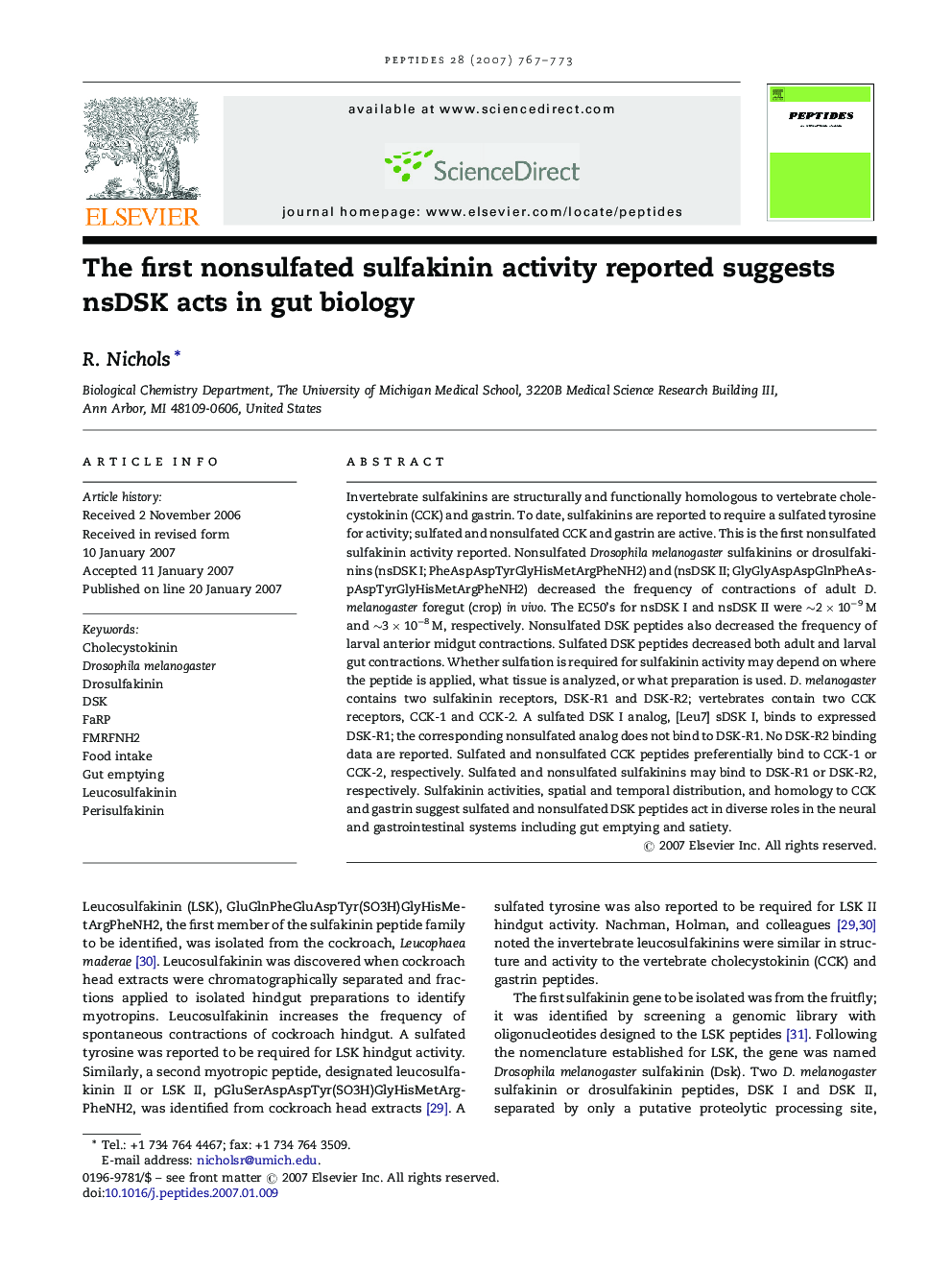| Article ID | Journal | Published Year | Pages | File Type |
|---|---|---|---|---|
| 2007645 | Peptides | 2007 | 7 Pages |
Invertebrate sulfakinins are structurally and functionally homologous to vertebrate cholecystokinin (CCK) and gastrin. To date, sulfakinins are reported to require a sulfated tyrosine for activity; sulfated and nonsulfated CCK and gastrin are active. This is the first nonsulfated sulfakinin activity reported. Nonsulfated Drosophila melanogaster sulfakinins or drosulfakinins (nsDSK I; PheAspAspTyrGlyHisMetArgPheNH2) and (nsDSK II; GlyGlyAspAspGlnPheAspAspTyrGlyHisMetArgPheNH2) decreased the frequency of contractions of adult D. melanogaster foregut (crop) in vivo. The EC50's for nsDSK I and nsDSK II were ∼2 × 10−9 M and ∼3 × 10−8 M, respectively. Nonsulfated DSK peptides also decreased the frequency of larval anterior midgut contractions. Sulfated DSK peptides decreased both adult and larval gut contractions. Whether sulfation is required for sulfakinin activity may depend on where the peptide is applied, what tissue is analyzed, or what preparation is used. D. melanogaster contains two sulfakinin receptors, DSK-R1 and DSK-R2; vertebrates contain two CCK receptors, CCK-1 and CCK-2. A sulfated DSK I analog, [Leu7] sDSK I, binds to expressed DSK-R1; the corresponding nonsulfated analog does not bind to DSK-R1. No DSK-R2 binding data are reported. Sulfated and nonsulfated CCK peptides preferentially bind to CCK-1 or CCK-2, respectively. Sulfated and nonsulfated sulfakinins may bind to DSK-R1 or DSK-R2, respectively. Sulfakinin activities, spatial and temporal distribution, and homology to CCK and gastrin suggest sulfated and nonsulfated DSK peptides act in diverse roles in the neural and gastrointestinal systems including gut emptying and satiety.
